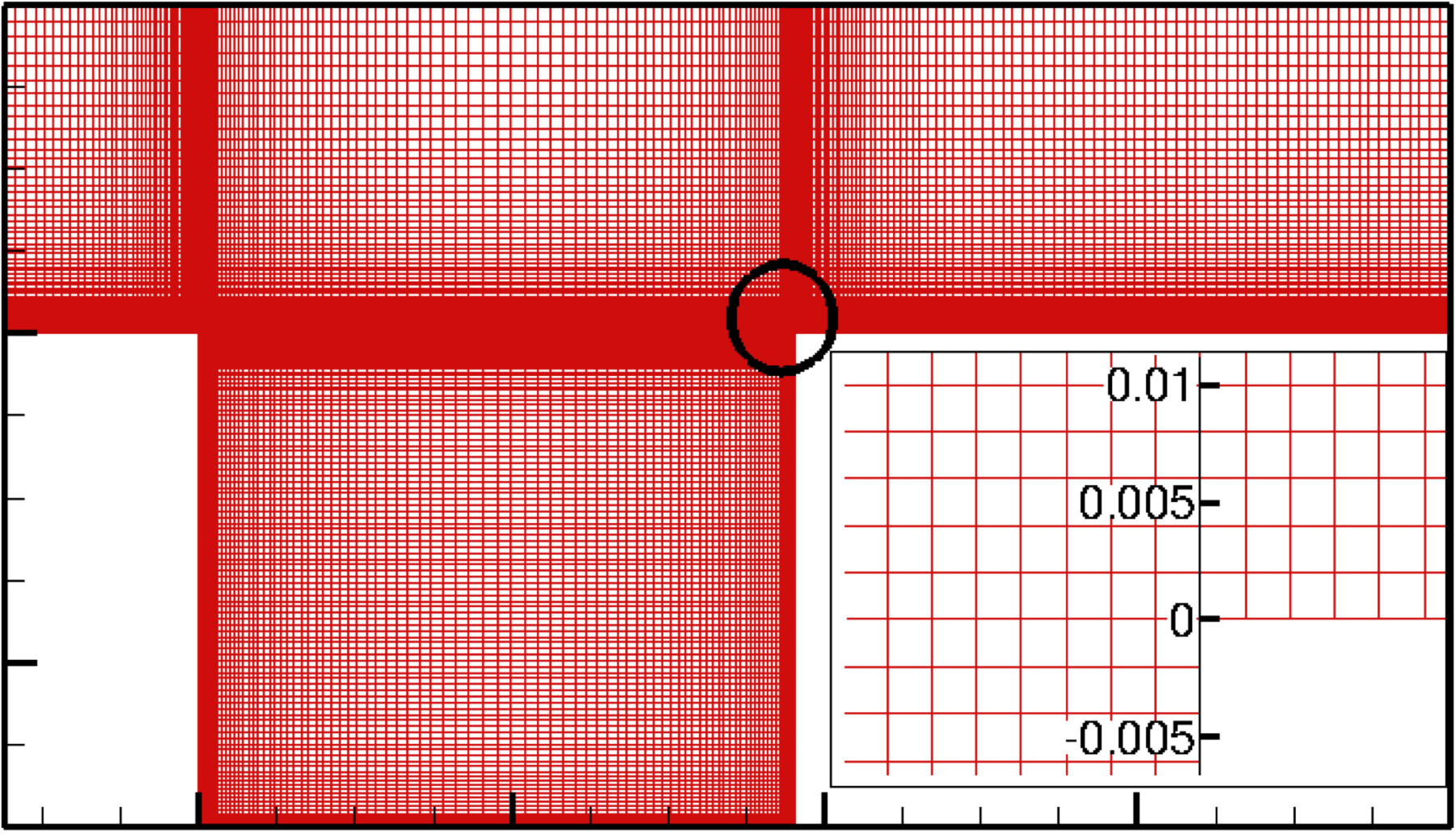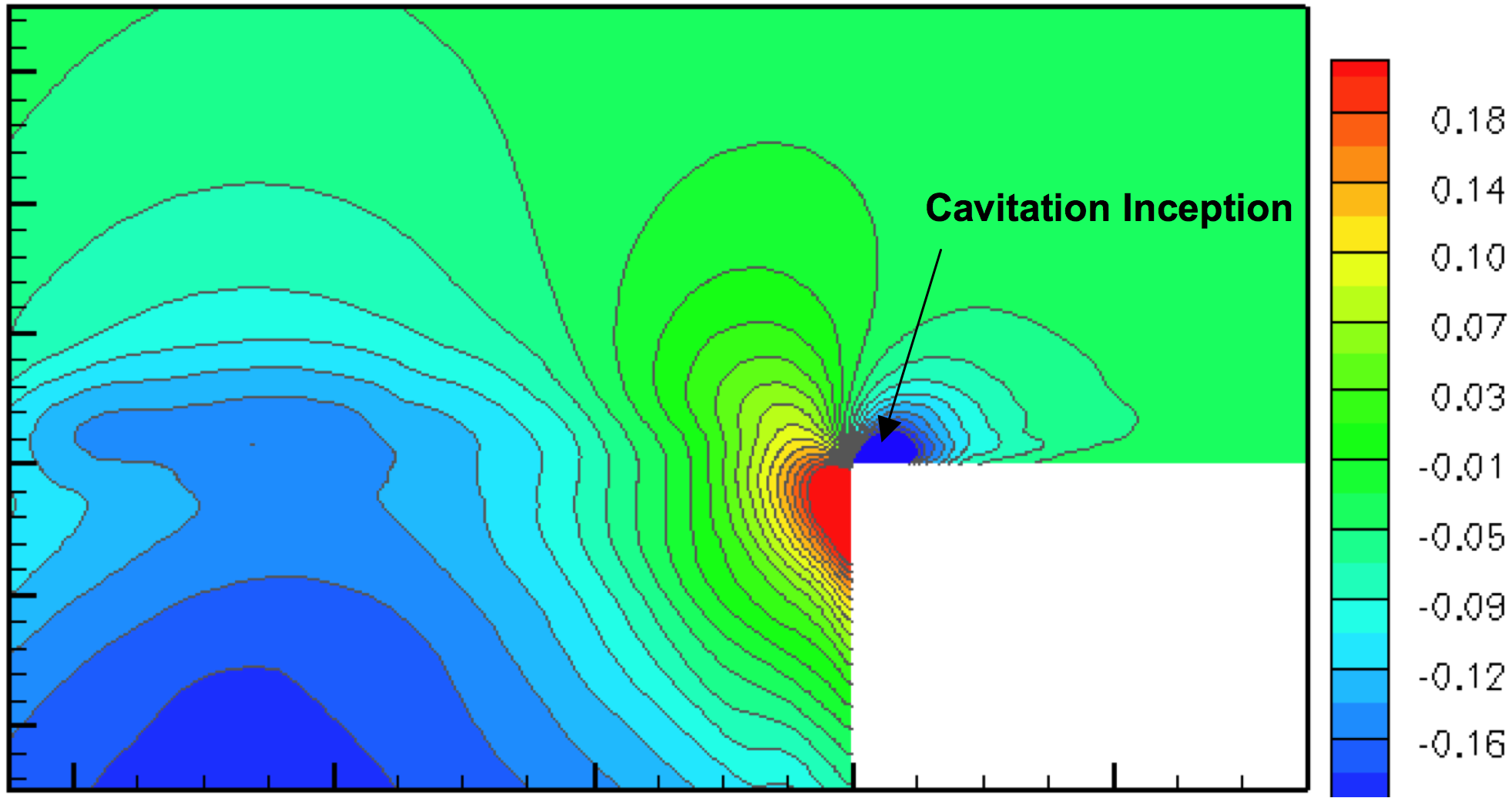|

Large Eddy Simulation (LES) with Discrete Bubble Modeling
The dynamics of bubbles that are under-resolved or subgrid compared to the computational grid is best represented by a Lagrangian-Eulerian approach wherein the bubbles are assumed as spherical and the motion of the bubbles are modeled using closures for forces such as drag, lift, added mass, gravity etc.. In addition, the growth and collapse of bubbles under internal and external pressure variations, viscous, and surface tension forces can be represented by the Rayleigh-Plesset (RP) equation. We have developed a model that predicts the bubble dynamics using this approach. The flow field is obtained by solving the low-Mach number, variable density, mixture theory based governing equations (Joseph et al., 1990]. This approach accounts for the volumetric displacements due to bubble motion and is being developed into an unstructured grid LES solver.
To tackle the disparate time-scales associated with bubble motion, fluid motion, and bubble size variations, an adaptive time-stepping algorithm is developed for the solution of the RP equations. The adaptive time-step for each bubble is determined separately using eigenvalue analysis, and bubble equations are solved repeatedly for each flow solver time-step (subcyling). The effectiveness of this approach in accurately capturing bubble-vortex dynamics is being investigated through validation studies. This approach is readily suitable for large-scale simulations of cavitating, bubbly flows over complex propulsion systems. We are investigating three problems relevant to cavitating flows using this approach: (i) Bubble-vortex interactions in a Rankine vortex that is representative of a tip vortex generated by propeller blades; (ii) Interactions between few, large-size bubbles with a vortex ring following the experiments by Sridhar and Katz (JFM, 1999), and (iii) unsteady flow over an open cavity at large Reynolds numbers based on the experiments by Liu and Katz (Phy. Fluids 2007).
 
LES of flow over a cavity showing cavitation inception. Simulations predict experimental trends observed by Liu and Katz (Phy. Fluids, 2007).
-
Finn, J., Shams, E, and Apte S.V., 2010, Modeling and simulation of multiple bubble entrainment and interactions with two-dimensional vortical flows, Physics of Fluids, accepted for publication. (PDF).
-
Shams, E, and Apte S.V., 2010, Prediction of small scale cavitation in a high-speed flow over an open cavity using large-eddy simulation, Journal of Fluids Engineering, accepted for publication. (PDF)
-
Shams, E, Finn, J., and Apte S.V., 2010, A numerical scheme for Euler-Lagrange simulation of bubbly flows in complex systems, International Journal of Numerical Methods in Fluids, accepted for publication. (PDF)
- Finn, J. and Apte S.V, Simulation of bubble and particle interactions with vortical flows using a discrete element model, ICMF2010, Seventh International Conference on Multiphase Flow, Tampa Bay, FL, 2010. (PDF)
-
Apte, S.V., Shams, E., and Finn, J., A hybrid Lagrangian-Eulerian approach for simulation of bubble dynamics, Seventh International Symposium on Cavitation, University of Michigan, Ann Arbor, 2009. (PDF)
-
Shams, E., and Apte, S.V., Large-eddy simulation of cavitation inception in a high speed flow over an open cavity,Seventh International Symposium on Cavitation, University of Michigan, Ann Arbor,, 2009. (PDF)
- Finn, J., 2009, A multiscale modeling approach for bubble-vortex interactions in hydro-propulsion systems, M.S. Thesis, School of Mechanical Industrial and Manufacturing Engineering, Oregon State University, Corvallis, OR. (PDF)
-
Apte S.V., Mahesh, K., and Lundgren, T., 2008, Accounting for finite-size effect in disperse two-phase flow, International Journal of Multiphase Flow, Vol. 34 (3), pp. 260-271. (PDF)
|
|
|
| |
|
©All rights reserved by the Apte Research Group. |

